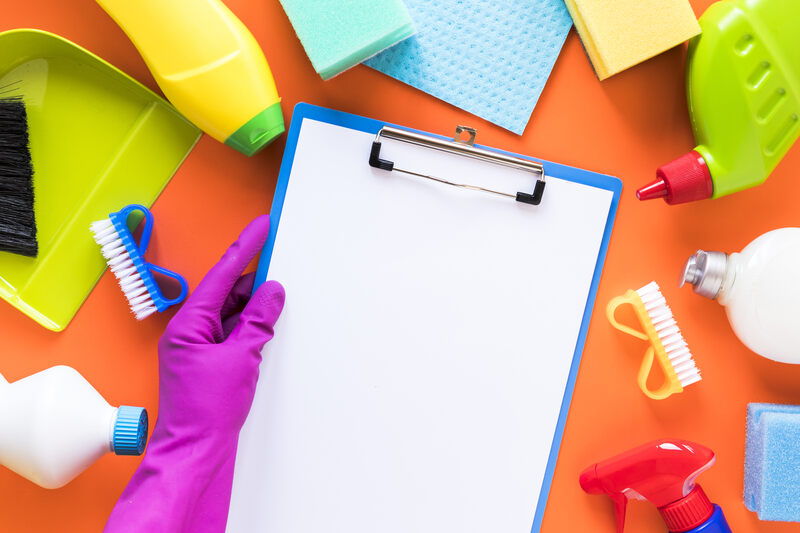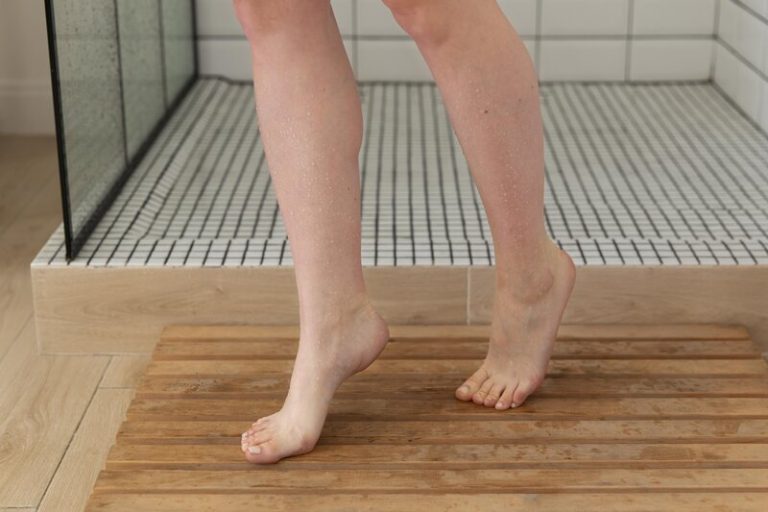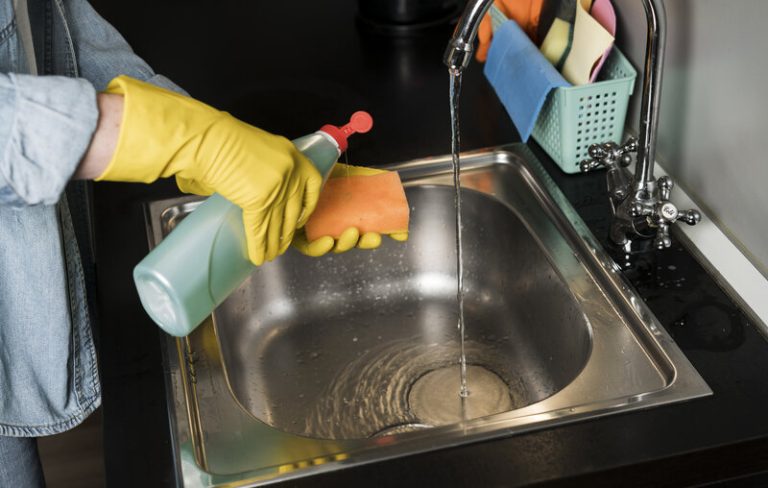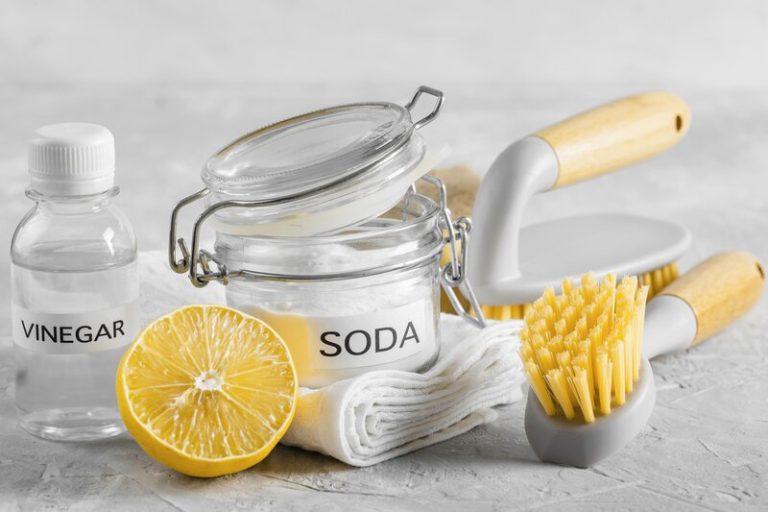Maintaining a clean and organised office space is essential for employee well-being and overall business productivity. However, do you know what areas in the front office are needed for cleaning? If not, then it’s time to understand the daily office cleaning checklist.
A professional office cleaning checklist is a systematic way to ensure that all cleaning tasks are completed efficiently and consistently.
This basic office cleaning checklist covers general cleaning tasks, restroom and kitchen cleaning, and all aspects of maintaining a clean office environment.
We will discuss the importance of an office cleaning tasks list, what tasks should be included, how to create an effective checklist and tips for its maintenance.
Learn these office cleaning guidelines to keep your office sparkling!
What is an Office Cleaning Checklist?
An office cleaning to-do list is a detailed list of cleaning tasks that need to be performed regularly to maintain a clean and hygienic work environment for employees, visitors, and clients. It includes specific instructions on what areas to clean, how often to clean them, and the standards to uphold.
Regular cleaning procedures outlined in the commercial office cleaning checklist ensure that common areas such as reception desks, meeting rooms, and restrooms stay presentable and sanitary. By incorporating practices like dusting, vacuuming, and sanitising, the checklist helps prevent the spread of germs and promotes a professional image.
The Importance of Office Cleaning Checklist
Having a weekly or daily office cleaning checklist is crucial for several reasons. It ensures that cleaning tasks are consistently carried out, helps in tracking completed tasks, assists in managing time efficiently, and ultimately enhances the overall cleanliness of the office.
Consistency is key when it comes to maintaining a tidy and organised work environment. With a well-structured checklist in place, everyone in the office knows what tasks need to be completed and when. This not only creates a sense of accountability but also ensures that no cleaning duties are overlooked.
- Tracking completed tasks becomes effortless with a checklist. By ticking off each task once completed, it provides a visual representation of progress and helps in prioritising remaining tasks. This visual aid can motivate employees to stay on top of their cleaning duties.
- Efficient time management is another significant benefit of utilising a daily or weekly office cleaning checklist. By breaking down cleaning tasks into manageable chunks and assigning specific time slots, employees can allocate their time effectively and prevent procrastination.
- Improved cleanliness is the ultimate goal of a well-maintained checklist. By promoting regular cleaning routines and ensuring all areas are consistently addressed, the office space not only looks more appealing but also contributes to a healthier work environment.
a. Ensures Consistency in Cleaning
Consistency in cleaning is vital for maintaining a professional and healthy work environment. An office cleaning checklist helps ensure that all cleaning tasks are performed regularly, reducing the risk of dirt buildup and promoting employee well-being.
It’s not just about a tidy appearance; a clean workspace contributes to employee health and engagement. Regular cleaning minimizes the spread of germs and allergens, creating a safer environment for everyone. Research shows that a clean office boosts employee productivity and morale, leading to better performance. A well-maintained workspace fosters a sense of pride among employees, showing that their well-being is valued by the organization. Consistency in cleaning routines is key to fostering a positive work culture and enhancing overall job satisfaction.
b. Keeps Track of Cleaning Tasks
Keeping track of cleaning tasks is essential for effective maintenance and organisation within the office. An office cleaning checklist helps monitor completed tasks, identify areas needing attention, and ensure that the office remains well-maintained.
By having a systematic approach to cleaning, businesses can create a more hygienic environment, boosting employee morale and productivity. Tracking cleaning tasks can lead to cost-effective maintenance strategies, preventing the need for major overhauls due to neglect. Consistent monitoring also contributes to a better overall image of the company, showing clients and visitors that the business values cleanliness and professionalism. Regular tracking of cleaning tasks promotes a healthier workspace, reducing the spread of germs and illnesses among staff.
c. Helps with Time Management
Effective time management is crucial in optimising productivity and efficiency. An office cleaning checklist, especially when tailored to weekly schedules, helps allocate cleaning tasks efficiently, ensuring that the cleaning process does not disrupt daily operations.
With the ongoing challenges posed by the COVID-19 pandemic, maintaining a clean and sanitised workspace has become more critical than ever. Cleaning teams must adhere to strict protocols to ensure the safety and well-being of employees. By incorporating time-efficient cleaning practices, such as using specialised equipment and dividing tasks among team members effectively, cleaning operations can be completed swiftly without compromising on quality. These streamlined processes not only enhance workplace hygiene but also contribute to a positive work environment, boosting employee morale and productivity.
d. Improves Overall Cleanliness
Enhancing the overall cleanliness of the office environment is a key goal of implementing a structured office cleaning checklist. By following a professional cleaning checklist, including specific tasks like kitchen cleaning, businesses can create a healthier and safer workspace for employees and visitors.
During the current global health crisis, the importance of maintaining high cleanliness standards, especially in shared office spaces, cannot be overstated. The presence of COVID-19 has highlighted the significance of stringent hygiene practices in all workplaces. Regular cleaning and disinfection, as outlined in the office cleaning checklist, are vital to help reduce the risk of infection transmission and promote a hygienic environment.
What Should Be Included in an Office Cleaning Checklist?
An effective office cleaning checklist should encompass various cleaning tasks tailored to different areas within the office. It should include general cleaning tasks, restroom maintenance, kitchen and break room cleaning, cleaning of office equipment, and addressing high-traffic areas to ensure a comprehensive cleaning routine.
For restroom maintenance, tasks like disinfecting toilets, sinks, and mirrors should be included. Refilling hand soap dispensers and restocking toilet paper and kitchen rolls are essential for maintaining cleanliness and hygiene.
In the kitchen, tasks such as cleaning worktops, sinks, and appliances, emptying and sanitizing rubbish bins, and wiping down tables and chairs should be on the checklist.
Regular cleaning of office equipment like computers, telephones, and printers should not be overlooked. Paying special attention to high-traffic areas such as reception areas, corridors, and communal areas is crucial to prevent the spread of germs and maintain a tidy workspace.
Here is a more detailed explanation of what are the things to clean in an office
a. General Cleaning Tasks
General cleaning tasks form the foundation of any office cleaning checklist, encompassing activities like dusting, hoovering, mopping, and rubbish removal. A basic office cleaning checklist may include tasks suitable for small office spaces or commercial establishments.
Specific tasks commonly found in a general cleaning checklist for small offices may involve:
- Wiping down surfaces
- Cleaning windows
- Sanitising restrooms
- Organising communal areas
In larger commercial offices, in addition to the standard cleaning tasks, maintenance of specialised equipment like floor buffers or industrial machines might be necessary.
b. Restroom Cleaning Tasks
Maintaining clean and sanitary toilets is crucial for employee health and well-being.
A clean toilet not only contributes to a positive work environment, but it also reflects the professionalism of the company. Taking care of toilet cleanliness is not just about aesthetics; it is essential for preventing the spread of germs and bacteria, reducing the risk of illness among employees.
Specific cleaning tasks in an office environment often go beyond surface cleaning, including disinfecting high-touch areas like door handles, light switches, and taps. Proper ventilation and odour control are also key aspects of maintaining a fresh and pleasant toilet environment.
c. Kitchen and Break Room Cleaning Tasks
The kitchen and staff room are shared spaces that require thorough cleaning to prevent contamination and ensure food safety. Tasks in this category may include cleaning appliances, disinfecting surfaces, emptying rubbish, and maintaining overall cleanliness.
Thorough cleaning of the kitchen and staff room plays a vital role in upholding hygiene standards and creating a safe environment for employees and visitors. Regular cleaning not only enhances the aesthetic appeal of these areas but also minimises the risk of cross-contamination and foodborne illnesses. Appliances such as cookers, microwaves, fridges, and coffee machines should be cleaned inside and out to remove grease, spills, and food particles that can harbour harmful bacteria.
Disinfecting surfaces like worktops, tables, and basin areas helps to kill germs and reduce the spread of pathogens. Emptying dustbins promptly is essential to prevent the build-up of odours and the attraction of pests. Overall cleanliness, including sweeping and mopping floors, wiping down cupboards, and organising supplies, contributes to a pleasant and healthy environment for everyone.
d. Office Equipment Cleaning Tasks
Regular maintenance of office equipment is essential to prolong their lifespan and ensure optimal functionality.
Keeping office equipment clean not only enhances their performance but also promotes a healthier and more productive workspace. Dusting computers helps prevent overheating and ensures efficient operation, while disinfecting phones reduces the spread of germs, promoting overall well-being in the office. Organising workstations can boost productivity by reducing clutter and creating a more visually pleasing environment. By integrating these tasks into daily cleaning routines, employees can contribute to the longevity and efficiency of office equipment, ultimately benefiting the entire workplace.
e. High-Traffic Area Cleaning Tasks
Regular cleaning of high-traffic areas is essential to prevent the spread of germs and maintain a tidy office environment. Cleaning tasks for high-traffic areas in a big or small office cleaning checklist may include regular hoovering, disinfecting surfaces, and promptly dealing with any visible stains or spills.
It’s important to focus on high-contact surfaces such as door handles, light switches, and shared equipment like printers and photocopiers, as these areas harbour a significant amount of bacteria. Using commercial-grade cleaning products and equipment can ensure thorough sanitisation. Establishing a regular cleaning schedule for these areas can help reduce absenteeism due to illness and create a healthier workspace for all employees. Remember, a clean office is not only about appearances; it also plays a crucial role in promoting productivity and overall well-being.
How to Create an Effective Office Cleaning Checklist?
Creating a deep cleaning list for office involves strategic planning and consideration of various factors to ensure comprehensive cleanliness and hygiene standards. It requires identifying cleaning tasks and their frequencies, assigning responsibilities, adapting to the office layout and type of business, and tailoring the checklist to meet specific needs.
One of the crucial steps in creating this checklist is to assess the size and layout of the office space. Determine the high-traffic areas that require more frequent cleaning, such as restrooms, kitchen areas, and common areas. Implement a systematic approach by categorising tasks into daily, weekly, and monthly schedules.
Consider enlisting the expertise of professional cleaners or cleaning agencies to help develop a thorough and efficient cleaning checklist. Their experience can offer valuable insights into best practices and industry standards, ensuring that no area is overlooked.
a. Identify Cleaning Tasks and Frequency
The first step in creating an effective office cleaning checklist is to identify the cleaning tasks required for different areas of the office and determine the frequency at which they should be performed. This step ensures that no cleaning task is overlooked, and the cleaning schedule is optimised for efficiency.
Once the tasks are identified, it’s crucial to categorize them according to their nature and urgency. For example, tasks like vacuuming, dusting, and rubbish removal may need daily attention, while deep cleaning tasks like carpet shampooing or window washing can be scheduled less frequently.
Considering the layout of the office space is also essential. High-traffic areas like entrance halls and break rooms may require more frequent cleaning compared to secluded corners. Planning the cleaning frequencies can help maintain a consistent and hygienic environment.
b. Assign Responsibilities
Assigning clear responsibilities to office workers or cleaning staff is essential for effective task management and accountability. By delegating specific cleaning tasks to individuals or teams, the office cleaning checklist can be efficiently executed, promoting employee engagement and a sense of ownership.
When responsibilities are clearly defined, employees feel more enabled and motivated to contribute to the overall cleanliness and organisation of the workspace. This not only leads to a cleaner office environment but also fosters a culture of teamwork and collaboration among colleagues. Delegating tasks according to individual strengths and preferences can further enhance efficiency and job satisfaction.
- Effective delegation involves setting realistic expectations, providing necessary resources, and offering constructive feedback.
- Regularly reviewing the assigned tasks and recognising employees’ efforts play a crucial role in sustaining high levels of employee engagement and performance.
c. Consider the Size and Layout of the Office
Tailoring the office cleaning checklist to the specific size and layout of the office is crucial for efficiency and effectiveness. Factors such as the number of rooms, shared spaces, and high-traffic areas should be considered to create a customised cleaning plan that addresses all areas appropriately.
When creating the checklist, it is important to take into account the unique aspects of the office space, whether it’s a compact open-plan layout or a multi-level establishment with diverse work zones. Adapting the cleaning checklist to fit these variations ensures that every nook and cranny is covered, promoting a hygienic environment.
Different office configurations may require specific cleaning focuses, such as more frequent cleaning of break rooms in larger offices or extra attention to individual desk spaces in smaller setups. Customising the checklist to suit these nuances optimises the cleaning process and improves overall workplace cleanliness.
d. Take into account the Type of Business
The nature of the business plays a significant role in determining the cleaning requirements and standards. Different businesses may have specific hygiene regulations or cleaning needs that should be reflected in the office cleaning checklist. Tailoring the checklist to the type of business ensures compliance and optimal cleanliness.
- For example, a medical facility such as a clinic or hospital will require specialised cleaning procedures to maintain a sterile environment and prevent the spread of infections. This includes frequent disinfection of high-touch surfaces, proper waste disposal, and air purification systems.
- On the other hand, restaurants and food establishments need rigorous cleaning of kitchen equipment, floors, and dining areas to meet health and safety regulations. Food safety standards dictate deep cleaning of cooking appliances, and refrigeration units, and thorough sanitisation after each shift.
Tips for Maintaining an Office Cleaning Checklist
Maintaining an office cleaning checklist requires regular review, updates, and strategic planning to ensure its effectiveness. To enhance the checklist’s functionality, businesses should encourage feedback from employees, schedule periodic deep cleaning tasks, and provide adequate supplies and equipment for the cleaning staff.
Employee feedback plays a crucial role in refining the checklist by pinpointing areas that need attention or improvement. By fostering a culture of open communication, staff members feel enabled to contribute to a cleaner and more organised work environment.
Incorporating deep cleaning schedules at appropriate intervals helps tackle accumulated dirt in overlooked spaces, promoting a healthier workspace and reducing allergens that could affect employee well-being.
Supplying the cleaning team with high-quality products and tools ensures efficiency and thorough cleaning, leading to a pristine office that reflects professionalism and care for both employees and visitors.
a. Regularly Review and Update the Checklist
Regularly reviewing and updating the office cleaning checklist is essential to adapt to changing circumstances and maintain high cleaning standards. Especially in the context of COVID-19, it is crucial to incorporate additional hygiene measures and best practices into the checklist for enhanced safety.
By frequently revisiting the checklist, the office management ensures that cleaning protocols are in line with the latest health guidelines. This proactive approach not only safeguards the well-being of employees but also instils a sense of security within the workplace. Through regular reviews, any deficiencies or areas needing improvement can be promptly identified and rectified, promoting a cleaner and healthier environment for everyone. As the dynamics of the COVID-19 situation continue to evolve, updating the checklist helps in staying ahead of potential risks and maintaining a hygienic workspace.
b. Encourage Feedback from Employees
Employee feedback is a valuable asset in improving the efficiency and effectiveness of the office cleaning checklist.
When employees feel that their opinions are valued and integrated into the cleaning procedures, it fosters a sense of ownership and responsibility among the team. This leads to increased morale and productivity within the workplace. Listening to their suggestions and concerns opens up avenues for innovation in cleaning techniques and helps in tailoring the checklist to address specific needs. Creating a feedback-friendly environment not only enhances the quality of cleaning but also promotes a culture of continuous improvement and teamwork. Collecting feedback through surveys, suggestion boxes, or regular meetings can ensure that the cleaning process remains dynamic and responsive to changing requirements.
c. Schedule Deep Cleaning Tasks
Incorporating deep cleaning tasks into the regular office cleaning schedule is essential for thorough maintenance and hygiene. Scheduling deep cleaning sessions for areas that require intensive cleaning, such as floors, carpets, or equipment, ensures the office environment remains sanitized and visually appealing.
Deep cleaning tasks can target corners and hidden nooks that are often overlooked during regular cleaning routines, preventing the accumulation of dust and dirt. Areas like grout lines, behind furniture, and inside appliances can benefit greatly from deep cleaning. Windows, curtains, and upholstery should also be included in the deep cleaning plan to maintain a fresh and inviting workspace.
By implementing a systematic approach to deep cleaning, not only does it enhance the overall cleanliness of the office, but also prolongs the lifespan of office furniture and equipment, saving on replacement costs in the long run. This proactive approach to maintenance sets a high standard for cleanliness, contributing to a healthier and more productive work environment.
d. Provide Adequate Supplies and Equipment
Equipping cleaning staff with the necessary supplies and tools is essential for the successful execution of the office cleaning checklist. Providing adequate cleaning products, equipment, and protective gear ensures that tasks are completed effectively, promoting a safe and hygienic work environment.
One of the key aspects of maintaining high cleaning standards is having a well-stocked inventory of supplies. From disinfectants and detergents to microfibre cloths and mops, each component plays a crucial role in achieving optimal cleanliness. Investing in quality equipment like vacuum cleaners, floor scrubbers, and steam cleaners can significantly enhance the efficiency and thoroughness of cleaning processes.
To streamline inventory management, it’s beneficial to categorise supplies into sections such as daily-use items, speciality cleaners, and protective gear. This organisation approach helps in keeping track of stock levels, identifying restocking needs, and ensuring that nothing essential runs out unexpectedly.
Last but not least, this office cleaning checklist can help you to maximise your office cleaning routine and ensure that nothing is missed.
From the explanation above, it can also be understood that office cleaning is a complex matter. Therefore, don’t tackle office cleaning alone. Trust TEKA Cleaning, the experts in commercial cleaning, to handle the complexities for you. Book now or give us a call on 01233 751 544 to experience our top-notch professional services.
Let TEKA Cleaning take care of your office cleaning needs, ensuring a clean, hygienic, and welcoming workspace for your employees and visitors. Contact us today and discover the difference our expertise can make.
Read also:











